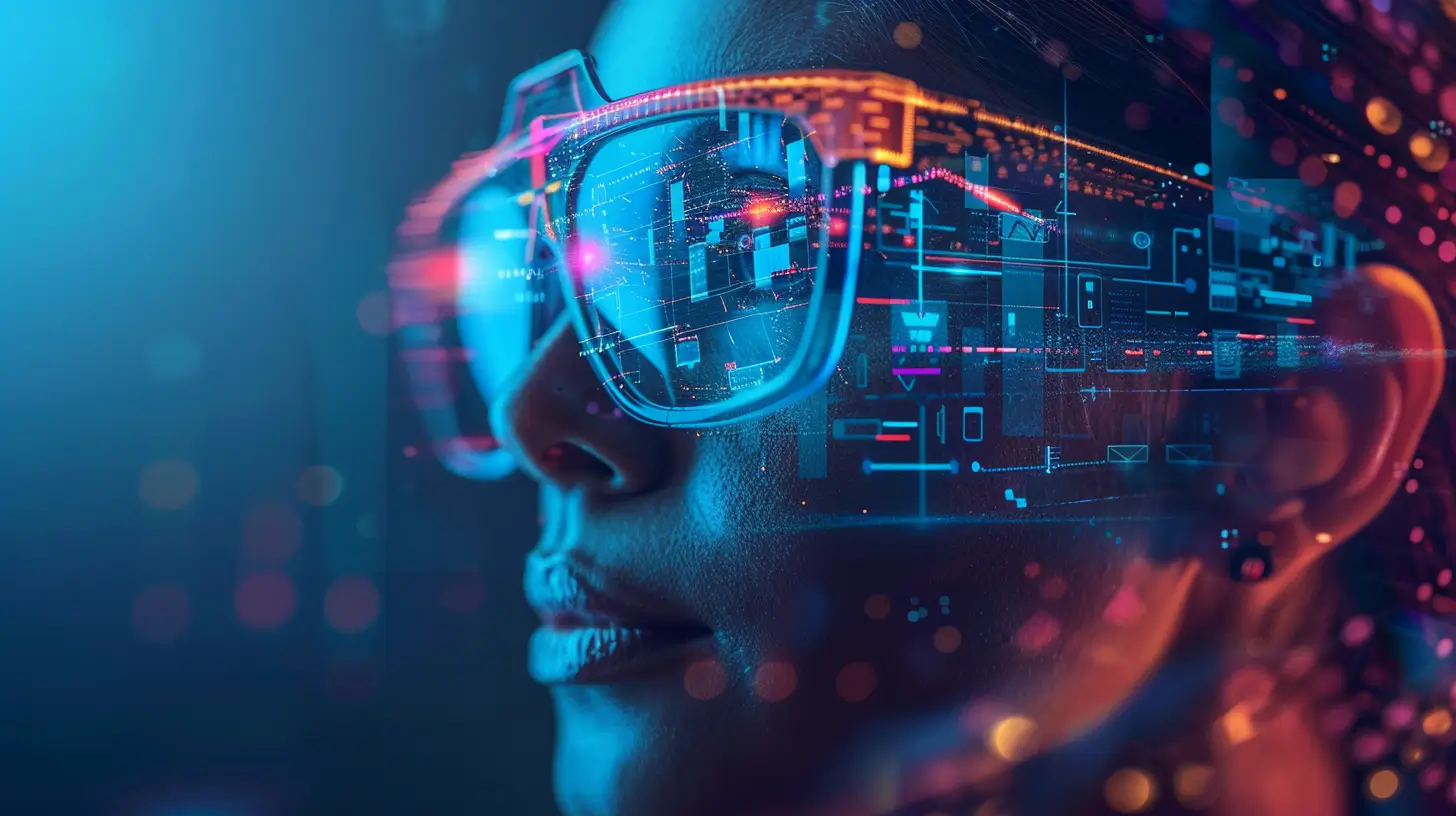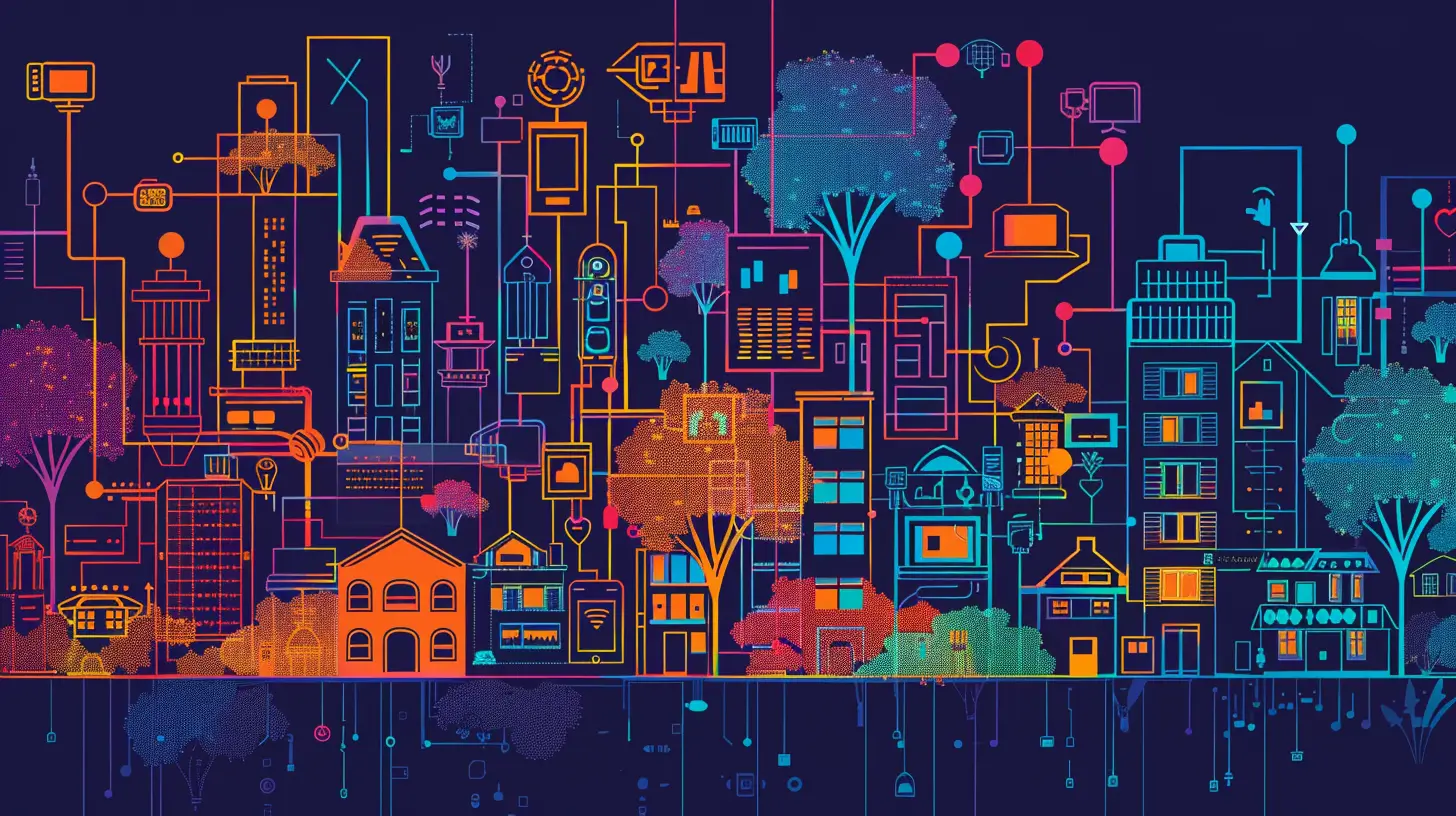Assistive Technology for Visually Impaired Individuals
2024-04-01 | By Orcam Staff

Assistive technology is a broad term that encompasses any device, software, or equipment that helps individuals with disabilities perform tasks that they would otherwise have difficulty completing. Assistive technology can be life-changing for individuals with vision impairments, providing them with the tools they need to live independently and achieve their goals.
In addition to the various types of assistive technology mentioned above, it's important to highlight the continuous advancements in this field. Technological innovations are constantly improving the quality and effectiveness of assistive devices for visually impaired individuals. Researchers and developers are working on creating more intuitive and user-friendly solutions to further enhance the independence and quality of life for people with vision impairments. By staying up-to-date with the latest developments in assistive technology, individuals with visual impairments can benefit from cutting-edge tools that cater to their specific needs and preferences.
In this article, we will explore the various types of assistive technology available for individuals with vision impairments and how they can enhance independence.
Types of Assistive Technology for Vision Impairments
Adaptive Equipment
Adaptive equipment refers to any device or tool that has been modified or designed specifically for individuals with disabilities. For individuals with vision impairments, adaptive equipment can include large print keyboards, talking calculators, and tactile maps.
These devices are designed to make everyday tasks easier and more accessible for individuals with vision impairments. For example, a large print keyboard can make it easier for someone with low vision to type on a computer, while a talking calculator can assist someone with a visual impairment in performing mathematical calculations.
Assistive Devices
Assistive devices are any tools or equipment that help individuals with disabilities perform tasks that they would otherwise have difficulty completing. For individuals with vision impairments, assistive devices can include screen readers, magnifiers, and braille displays.
Screen readers are software programs that read the text on a computer screen aloud, allowing individuals with vision impairments to access and navigate digital content. Magnifiers, on the other hand, are devices that enlarge text and images, making them easier to see for individuals with low vision. Braille displays are devices that convert digital text into braille, allowing individuals who are blind to read and navigate digital content.
Tools for Visually Impaired
There are also a variety of tools specifically designed for individuals with vision impairments. These tools can include talking watches, color identifiers, and audio labelers.
Talking watches are watches that announce the time aloud, making it easier for individuals with vision impairments to keep track of time. Color identifiers are devices that can identify and announce the color of an object, helping individuals with color blindness or low vision distinguish between different colors. Audio labelers are devices that allow individuals with vision impairments to record and play back audio labels for items, making it easier for them to identify and organize their belongings.
Low Vision Aids
Low vision aids are devices that help individuals with low vision make the most of their remaining vision. These aids can include magnifiers, telescopes, and filters.
Magnifiers, as mentioned earlier, enlarge text and images, making them easier to see for individuals with low vision. Telescopes, on the other hand, can help individuals with low vision see objects that are far away, such as street signs or bus numbers. Filters are colored lenses that can enhance contrast and reduce glare, making it easier for individuals with low vision to read and see objects.
Accessibility Tools
Accessibility tools are software programs or features that make digital content more accessible for individuals with disabilities. For individuals with vision impairments, accessibility tools can include screen readers, voice recognition software, and closed captioning.
Screen readers, as mentioned earlier, read the text on a computer screen aloud, making digital content accessible for individuals with vision impairments. Voice recognition software allows individuals to control their computer using their voice, making it easier for individuals with mobility impairments to use a computer. Closed captioning is a feature that displays text on a screen, making video content accessible for individuals who are deaf or hard of hearing.
How Assistive Technology Enhances Independence
Assistive technology can enhance independence for individuals with vision impairments in a variety of ways. Here are some of the key benefits of using assistive technology:
Assistive technology provides access to information through tools like screen readers and braille displays
Increased mobility with aids like magnifiers and canes helps individuals with vision impairments navigate their surroundings
Improved communication through voice recognition software and closed captioning enhances interactions
Overall, assistive technology promotes greater independence by equipping individuals with necessary tools and resources
Access to Information
Assistive technology, such as screen readers and braille displays, allows individuals with vision impairments to access and navigate digital content. This means they can read emails, browse the internet, and use various software programs, just like their sighted peers. This access to information is crucial for individuals with vision impairments to stay informed and connected.
Increased Mobility
Assistive technology, such as low vision aids and mobility aids, can help individuals with vision impairments move around more independently. For example, a magnifier can help someone with low vision read street signs and bus numbers, while a cane or guide dog can help someone who is blind navigate their surroundings.
Improved Communication
Assistive technology, such as voice recognition software and closed captioning, can improve communication for individuals with vision impairments. Voice recognition software allows individuals to communicate using their voice, while closed captioning makes video content accessible for individuals who are deaf or hard of hearing.
Greater Independence
Overall, assistive technology can greatly enhance independence for individuals with vision impairments. By providing them with the tools they need to perform tasks and access information, assistive technology allows individuals with vision impairments to live more independently and achieve their goals.
Examples of Assistive Technology for Vision Impairments
There are many examples of assistive technology that have been specifically designed for individuals with vision impairments. Here are a few examples:
OrCam MyEye
The OrCam MyEye is a revolutionary wearable device that harnesses the power of artificial intelligence to perform a variety of tasks that enhance the daily lives of individuals with vision impairments. Through its advanced technology, this innovative device has the ability to accurately read text aloud, easily recognize faces, and identify objects with remarkable precision. By providing users with these essential functions, the OrCam MyEye empowers individuals to navigate their surroundings more confidently and independently, opening up a world of possibilities for those with visual challenges. With its user-friendly design and intuitive operation, this device has the potential to truly transform the way in which individuals with vision impairments interact with the world around them.
Be My Eyes
Be My Eyes is a free app that connects individuals with vision impairments to sighted volunteers through a live video call. This app can be used for a variety of tasks, such as reading labels, identifying objects, and navigating unfamiliar surroundings.
JAWS
JAWS (Job Access With Speech) is a screen reader that allows individuals with vision impairments to access and navigate digital content. This software is widely used in educational and professional settings, making it easier for individuals with vision impairments to participate in school and work.
Conclusion
Assistive technology not only enhances the quality of life for individuals with vision impairments but also empowers them to overcome daily challenges with greater ease. These innovative tools and devices are designed to bridge the gap between limitations and possibilities, offering a sense of autonomy and freedom that might otherwise be restricted. By embracing assistive technology, visually impaired individuals can navigate the world with confidence and pursue their aspirations without unnecessary barriers.
Assistive technology plays a crucial role in enhancing independence for individuals with vision impairments. By providing access to information, increasing mobility, improving communication, and promoting independence, assistive technology allows individuals with vision impairments to live more independently and achieve their goals. With the wide range of assistive technology available, there is a solution for every individual with a vision impairment.
Key Takeaways
Assistive technology, such as low vision aids and mobility aids, enhances independence for individuals with vision impairments by providing tools to perform tasks and access information.
Examples of assistive technology include the OrCam MyEye, Be My Eyes app, and JAWS screen reader, which empower visually impaired individuals to navigate their surroundings, connect with sighted volunteers, and access digital content.
By bridging the gap between limitations and possibilities, assistive technology offers autonomy, freedom, and confidence to visually impaired individuals, enabling them to pursue their aspirations without unnecessary barriers.
More Stories

Veterans Associations and How They Can Help You - OrCam
2024-06-24 | By OrCam Staff

Top AI Assistive Technologies Enhancing Accessibility | OrCam
Explore how AI-driven assistive technologies are revolutionizing accessibility for individuals with disabilities.
2024-05-29 | By OrCam Staff

AI in Education: Enhancing Accessibility for All Students | OrCam
AI is changing the face of education by enhancing accessibility. Explore practical applications and success stories in educational technology.
2024-05-28 | By OrCam Staff

Revolutionizing Accessibility: How AI & IoT Enhance Assistive Technology
Explore the impact of AI and IoT on assistive tech, transforming accessibility and empowering lives with smart innovations.
2024-05-28 | By OrCam Staff

Transforming Lives: AI & IoT in Assistive Tech | Personal Stories
Read inspiring personal stories about the transformative power of AI and IoT in assistive technology.
2024-05-28 | By OrCam Staff

Fight Vision Loss: Learn About Retinitis Pigmentosa Today | OrCam
Empower yourself with knowledge on Retinitis Pigmentosa. Understand the causes, recognize the symptoms, and find support.
2024-05-23 | By OrCam Staff



